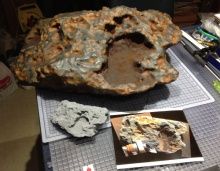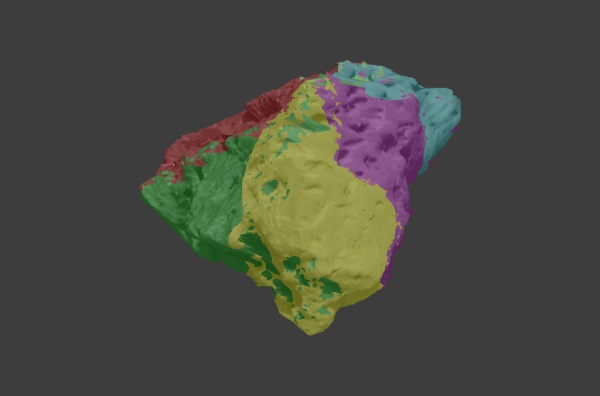NASA scientists replicating a rock on Mars using images and 3D printing

Scientists finally have their hands on a piece of Mars, sort of. Nasa has announced that it has replicated a rock on Mars using a 3D printer.
This realistic looking, true-size facsimile of a martian meteorite was found in 2009 and called "Block Island." Block Island is the largest meteorite yet found on Mars. It is an iron-nickle meteorite about the size of a small ice chest.
Most meteorites break up when hitting the ground because today's martian atmosphere is not dense enough to slow them down enough. Scientists say this meteorite could have landed on Mars intact only if it had two things: a very specific entry point into the atmosphere and a very shallow flight path. That would slow it down enough to keep it from breaking apart upon landing.
The 3D model is processed from precise measurements and stereo images taken five years ago by Opportunity's panoramic camera, or PanCam installed on a rover. Researcher Kris Capraro at NASA's Jet Propulsion Laboratory in Pasadena, California says one reason the rock could not be replicated back in 2009 is that the rover could not see every square inch of the meteorite. The missing data created holes in the computer model. That made the 3D model unfit for 3D printing.
Last summer, said Capraro, researchers solved the problem of filling in the missing data and built several small models of the meteorite.
It was pretty cool to have these small models, but for researchers, creating a life-size model was the only "natural" way to "visualize fully what Opportunity beamed home as a 2D image to humankind on Earth."
Capraro and his colleages used software which is usually used to create navigation maps for planning rover drive paths to create depth meshes of the meteorite's surface from six positions, then combined them into a 3D digital model.
Since the model was much bigger than the 3D printer's building space, researchers divided the computer model of the meteorite into 11 sections. They then used a FDM 3D printer to build each part layer by layer.

It took 305 hours and 36 minutes to print the parts. Then the parts were assembled and they finished by painting it to match the real rock's color based on rover images.

"It's been an interesting challenge to create the large 3D model," said Capraro. "It's the next best thing to bringing back real Martian rock samples back to Earth."








